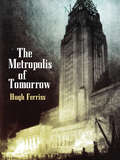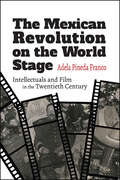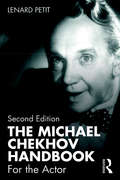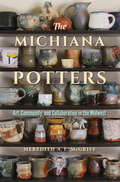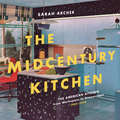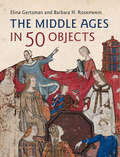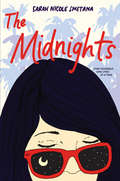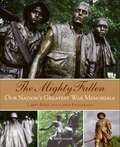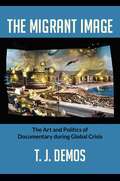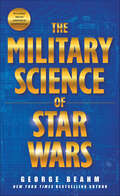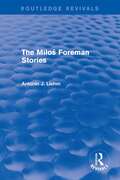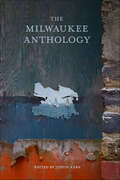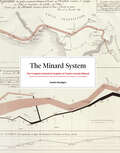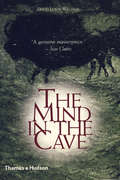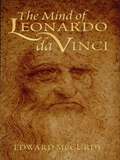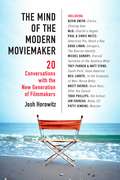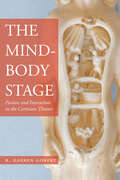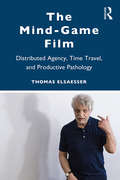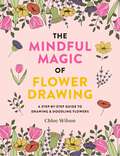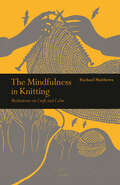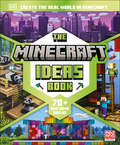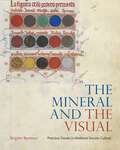- Table View
- List View
The Metropolis of Tomorrow (Dover Architecture Ser.)
by Hugh FerrissIn 1916, New York City enacted zoning laws that mandated the building of “set-back” structures so that light and air would be more freely admitted into the streets below. This concept was first proposed by Louis Sullivan in his 1891 article, “The High-Building Question” (inspired by William Le Baron Jenney’s recently completed Manhattan Building in Chicago.) Hugh Ferriss (1889-1962), American draftsman and architect, studied architecture at Washington University in St. Louis where the Beaux Arts school was favored. Early in his career he worked as a draftsman in the office of Cass Gilbert until he became a freelance delineator. In 1922, Ferris took part in a series of zoning envelope studies that sought to comply with the earlier city legislation. Such were the key ingredients that gave rise to the book at hand.In The Metropolis of Tomorrow, 49 stunning illustrations depict towering structures, personal space, wide avenues, and rooftop parks — features that now exist in many innovative, densely populated urban landscapes. Ferriss uses metaphors from nature that lend his text a poetic quality.
The Mexican Revolution on the World Stage: Intellectuals and Film in the Twentieth Century (SUNY series in Latin American Cinema)
by Adela Pineda FrancoThe first major social revolution of the twentieth century, the Mexican Revolution was visually documented in technologically novel ways and to an unprecedented degree during its initial armed phase (1910–21) and the subsequent years of reconstruction (1921–40). Offering a sweeping and compelling new account of this iconic revolution, The Mexican Revolution on the World Stage reveals its profound impact on both global cinema and intellectual thought in and beyond Mexico. Focusing on the period from 1940 to 1970, Adela Pineda Franco examines a group of North American, European, and Latin American filmmakers and intellectuals who mined this extensive visual archive to produce politically engaged cinematic works that also reflect and respond to their own sociohistorical contexts. The author weaves together multilayered analysis of individual films, the history of their production and reception, and broader intellectual developments to illuminate the complex relationship between culture and revolution at the onset of World War II, during the Cold War, and amid the anti-systemic movements agitating Latin America in the 1960s. Ambitious in scope, this book charts an innovative transnational history of not only the visual representation but also the very idea of revolution.
The Michael Chekhov Handbook: For the Actor
by Lenard PetitThe Michael Chekhov Handbook is a practical guide to Chekhov’s supportive techniques for actors, fully updated with new exercises that examine the relationship between the sensations of the physical body and the imagination. Lenard Petit draws on 25 years of teaching experience to unlock and illuminate Michael Chekhov’s philosophy, and offers guiding principles and effective tools that actors can apply in rehearsal and performance. The second edition focuses on the building blocks of drama and an exploration of the five senses as an expressive springboard, with a new section on the function of the Archetype in the Chekhov method. Theory and practice are treated here with clarity and simplicity. Dedicated to students and teachers of acting, The Michael Chekhov Handbook provides readers with the essential tools they need to put the rewarding principles of this technique into use.
The Michiana Potters: Art, Community, and Collaboration in the Midwest (Material Vernaculars)
by Meredith A. McGriffA new pottery tradition has been developing along the border of northern Indiana and southern Michigan. Despite the fact that this region is not yet an established destination for pottery collectors, Michiana potters are committed to pursuing their craft thanks to the presence of a community of like-minded artists. The Michiana Potters, an ethnographic exploration of the lives and art of these potters, examines the communal traditions and aesthetics that have developed in this region. Author Meredith A. E. McGriff identifies several shared methods and styles, such as a preference for wood-fired wares, glossy glaze surfaces, cooler colors, the dripping or layering of glazes on ceramics that are not wood-fired, the handcrafting of useful wares as opposed to sculptural work, and a tendency to borrow forms and decorative effects from other regional artists. In addition to demonstrating a methodology that can be applied to studies of other emergent regional traditions, McGriff concludes that these styles and methods form a communal bond that inextricably links the processes of creating and sharing pottery in Michiana.
The Midcentury Kitchen: America's Favorite Room, From Workspace To Dreamscape, 1940s-1970s
by Sarah ArcherAn illustrated pop history from aqua to avocado, Westinghouse to Wonder Bread Nearly everyone alive today has experienced cozy, welcoming kitchens packed with conveniences that we now take for granted. Sarah Archer, in this delightful romp through a simpler time, shows us how the prosperity of the 1950s kicked off the technological and design ideals of today’s kitchen. In fact, while contemporary appliances might look a little different and work a little better than those of the 1950s, the midcentury kitchen has yet to be improved upon. During the optimistic consumerism of midcentury America when families were ready to put their newfound prosperity on display, companies from General Electric to Pyrex to Betty Crocker were there to usher them into a new era. Counter heights were standardized, appliances were designed in fashionable colors, and convenience foods took over families’ plates. With archival photographs, advertisements, magazine pages, and movie stills, The Midcentury Kitchen captures the spirit of an era—and a room—where anything seemed possible.
The Middle Ages in 50 Objects
by Barbara H. Rosenwein Elina GertsmanThe extraordinary array of images included in this volume reveals the full and rich history of the Middle Ages. Exploring material objects from the European, Byzantine, and Islamic worlds, the book casts a new light on the cultures that formed them, each culture illuminated by its treasures. The objects are divided among four topics: The Holy and the Faithful; The Sinful and the Spectral; Daily Life and Its Fictions; and Death and Its Aftermath. Each section is organized chronologically, and every object is accompanied by a penetrating essay that focuses on its visual and cultural significance within the wider context in which the object was made and used. Spot maps add yet another way to visualize and consider the significance of the objects and the history that they reveal. Lavishly illustrated, this is an appealing and original guide to the cultural history of the Middle Ages.
The Midnights
by Sarah Nicole SmetanaThis voice-driven coming-of-age YA novel is perfect for fans of Katie Cotugno and Playlist for the Dead.Susannah Hayes has never been in the spotlight, but she dreams of following her father, a former rock star, onto the stage. As senior year begins, she’s more interested in composing impressive chord patterns than college essays, certain that if she writes the perfect song, her father might finally look up from the past long enough to see her. But when he dies unexpectedly, her dreams—and her reality—shatter.While Susannah struggles with grief, her mother uproots them to a new city. There, Susannah realizes she can reinvent herself however she wants: a confident singer-songwriter, member of a hip band, embraced by an effortlessly cool best friend. But Susannah is not the only one keeping secrets, and soon, harsh revelations threaten to unravel her life once again.Set against the scintillating landscape of Southern California, The Midnights is an evocative coming-of-age debut about loss, creativity, and finding your voice while you’re still finding yourself.
The Mighty Fallen: American War Memorials
by Larry Bond f-stop FitzgeraldThe Mighty Fallen is a beautiful, evocative presentation of more than 150 never-before-seen photographs of the nation's greatest monuments and war memorials, along with text that describes the memorials and tells their stories. This extraordinary collection calls attention to the power of memory and the ways in which we immortalize people and events. As Larry Bond notes in the Introduction, "Memories of a war or battle are unpleasant, but few veterans would want them erased." This book is a unique tribute to veterans and a commemoration of some of the most significant conflicts in our history. Most battlefields leave little record of the historic confrontations that occurred there. Those who fought in epic struggles want us to remember not just the outcome, but the cost of victory and those who paid the price for the freedoms we enjoy today. Memories fade, so we raise monuments of stone and bronze to carry their message of sacrifice through the centuries. The Iwo Jima Memorial and the Vietnam Veterans Memorial in Washington DC are instantly recognizable, but there are monuments all over North America honoring more than 300 years of military service. The Mighty Fallen shows you hundreds of monuments, memorials, and statues conveying the message their designers wanted you to hear—these are more than just a date and location.
The Migrant Image: The Art and Politics of Documentary during Global Crisis
by T. J. DemosIn The Migrant Image T. J. Demos examines the ways contemporary artists have reinvented documentary practices in their representations of mobile lives: refugees, migrants, the stateless, and the politically dispossessed. He presents a sophisticated analysis of how artists from the United States, Europe, North Africa, and the Middle East depict the often ignored effects of globalization and the ways their works connect viewers to the lived experiences of political and economic crisis. Demos investigates the cinematic approaches Steve McQueen, the Otolith Group, and Hito Steyerl employ to blur the real and imaginary in their films confronting geopolitical conflicts between North and South. He analyzes how Emily Jacir and Ahlam Shibli use blurs, lacuna, and blind spots in their photographs, performances, and conceptual strategies to directly address the dire circumstances of dislocated Palestinian people. He discusses the disparate interventions of Walid Raad in Lebanon, Ursula Biemann in North Africa, and Ayreen Anastas and Rene Gabri in the United States, and traces how their works offer images of conflict as much as a conflict of images. Throughout Demos shows the ways these artists creatively propose new possibilities for a politics of equality, social justice, and historical consciousness from within the aesthetic domain.
The Migrant Project: Contemporary California Farm Workers
by Rick NahmiasThe images in this book highlight the lives of the men and women who struggle to exist while literally feeding this country. Countless words and studies over decades bemoan the plight of those who toil in the fields, but Rick Nahmias's pictures bring farm workers to us in an unforgettable way, taking us beyond stoop labor stills and into their intimate moments and inner lives. Having traveled over four thousand miles to document California's migrant workforce, Nahmias's soulful images and incisive text go beyond one state's issues, illuminating the bigger story about the human cost of feeding America. The Migrant Project includes the images and text of the traveling exhibition of the same name, along with numerous outtakes and an in-depth preface by Nahmias. Accompanied by a Foreword from United Farm Worker co-creator Dolores Huerta, essays by top farm worker advocates, and oral histories from farm workers themselves, this volume should find itself at home in the hands of everyone from the student and teacher, to the activist, the photography enthusiast, and the consumer.Every day in the hot fields of California, hundreds of thousands of farmworkers toil for long hours at low pay to provide fruit and vegetables to feed our nation. Most Americans never see the faces of these hard-working men and women, and know little or nothing about the harsh conditions they endure. The Migrant Project has done an extraordinary job documenting these workers' lives. Rick Nahmias's powerful photographs and the beautiful essays of dedicated advocates tell an inspiring story of the farmworkers' historic struggle for the respect, the dignity, and the justice they so obviously deserve.--U.S. Senator Edward M. Kennedy, Massachusetts Nahmias's images starkly capture both the humanity of the farm workers who literally feed our country, and the inhumanity of a system which has kept them and their predecessors prisoners to poverty for decades. This book is a testament to the flesh-and-blood cost of feeding America.--Arianna Huffington, author, editor-in-chief of The Huffington Post, and nationally syndicated columnistUniversity of New Mexico Press gratefully acknowledges the generous contribution of the Columbia Foundation toward the publication of this book.
The Military Science of Star Wars
by George BeahmGeorge Beahm, a former U.S. Army major, draws on his experience to discuss the military science of the sprawling Star Wars universe: its personnel, weapons, technology, tactics and strategy, including an analysis of its key battles to explain how the outmanned and outgunned rebels ultimately prevailed against overwhelming forces. Contrasting the military doctrine of the real world with the fictional world of Star Wars, the author constructively criticizes the military strengths and weaknesses of Darth Vader’s Galactic Empire and Kylo Ren’s First Order... From Star Wars: A New Hope (1977) to Rogue One (2016), this timely book demystifies the operational arts in an accessible and entertaining way for military personnel and civilians. Replete with a glossary of military terms, this book is supplemented with an annotated bibliography.At the Publisher's request, this title is being sold without Digital Rights Management Software (DRM) applied.
The Miloš Forman Stories (Routledge Revivals)
by Antonín J. LiehmFirst published in 1975, this book examines the career of one of the leading post-war Czech filmmakers Miloš Forman through his own testimony. After recollecting his childhood and early artistic ventures, Forman gives accounts of the making of his major films, interspersed with contemporaneous reviews by the author, and in the final chapter he sums up his ‘lessons along the way’. A section entitled ‘Stories behind the Stories’ fills in details on the events and people mentioned in Forman’s narrative. The author’s commentary provides valuable insights not only into the aesthetics of filmmaking but also the social and political environment in contemporary Czechoslovakia.
The Milwaukee Anthology (Belt City Anthologies)
by Justin KernA collection of essays, art, stories, and poetry that offer a nuanced portrait of Milwaukee in all its hope and hurt, weirdness and wonder.The Milwaukee Anthology presents a rich mosaic of one of America&’s toughest zip codes. With a diverse range of perspectives, authors and artists share honest first-hand stories about Riverwest, Sherman Park, Hmong New Year&’s shows, 7 Mile Fair, the Rolling Mill commemoration, and much more. Edited by Justin Kern, and with more than fifty contributors including Dasha Kelly, Pardeep Kaleka, and Michael Perry, this collection includes stories about: Redlining in the city Painting a community mural in Sherman Park Reflections after the Oak Creek Sikh Temple Shooting The city&’s upstart microbrewing industry The rise of Giannis Antetokounmpo and the Milwaukee Bucks
The Minard System: The Complete Statistical Graphics of Charles-Joseph Minard
by Sandra RendgenIf you have any interest in information graphics, maps, or history, you know of the seminal flow map of Napoleon's 1812 march into Russia by Charles-Joseph Minard, made famous by Edward Tufte, and considered to be one of the most magnificent data graphics ever produced. The Minard System explores the nineteenth-century civil engineer's career and the story behind this masterpiece of multivariate data, as well as sixty of Minard's other statistical graphics reflecting social and economic changes of the Industrial Revolution in Europe and around the world. These stunning drawings are from the collection of the École Nationale des Ponts et Chaussées in Paris and have never before been published in their entirety.
The Mind in the Cave: Consciousness and the Origins of Art
by David Lewis-WilliamsThe breathtakingly beautiful art created deep inside the caves of western Europe has the power to dazzle even the most jaded observers. Emerging from the narrow underground passages into the chambers of caves such as Lascaux, Chauvet, and Altamira, visitors are confronted with symbols, patterns, and depictions of bison, woolly mammoths, ibexes, and other animals. Since its discovery, cave art has provoked great curiosity about why it appeared when and where it did, how it was made, and what it meant to the communities that created it. David Lewis-Williams proposes that the explanation for this lies in the evolution of the human mind. Cro-Magnons, unlike the Neanderthals, possessed a more advanced neurological makeup that enabled them to experience shamanistic trances and vivid mental imagery. It became important for people to "fix," or paint, these images on cave walls, which they perceived as the membrane between their world and the spirit world from which the visions came. Over time, new social distinctions developed as individuals exploited their hallucinations for personal advancement, and the first truly modern society emerged. Illuminating glimpses into the ancient mind are skillfully interwoven here with the still-evolving story of modern-day cave discoveries and research. The Mind in the Cave is a superb piece of detective work, casting light on the darkest mysteries of our earliest ancestors while strengthening our wonder at their aesthetic achievements.
The Mind of Leonardo da Vinci (Dover Fine Art, History Of Art Series)
by Edward McCurdyIn this classic, engrossing text, a distinguished historian explores the mind and manifold interests of the greatest personality of the Renaissance. More than just a biography, the book presents a detailed investigation of Leonardo's genius. Its colorful, evocative prose offers numerous demonstrations of the master's achievements, not only in sculpture and painting, but also in music, engineering, and even experimental aviation.A renowned authority on the works and personality of Leonardo, author Edward McCurdy translated many of the artist's writings. "In the thousands of pages of his manuscript he has left the mirror of his thought," McCurdy observes, "and there his mind may be seen at work, moving among the phenomena of nature and the inherited knowledge of antiquity, trying all things, expounding all things, proving all things." McCurdy begins by tracing the artist's travels, from his native Florence to Milan, Venice, Rome, and France. Part Two examines the manuscripts and their philosophical revelations, and the third section assesses the paintings and sculpture. First published in 1928, this book remains one of the best introductions to Leonardo and his extraordinary versatility.
The Mind of the Modern Moviemaker
by Joshua HorowitzA revealing look at the influences and aspirations of today's hottest filmmakers A new era has dawned in Hollywood, with a wave of innovative filmmakers redefining the art of big-screen entertainment for modern audiences. Entertainment journalist Josh Horowitz provides an in-depth look at twenty directors on the leading edge through a series of candid interviews. Horowitz covers a full range of styles and sensibilities-revealing both the points of agreement and the sharp distinctions among this eclectic group:* Kevin Smith's do-it-yourself aesthetics in Clerks and Chasing Amy* Michel Gondry's surreal dreamscapes in Eternal Sunshine of the Spotless Mind* Trey Parker's love of fart jokes in South Park* How Jon Favreau's teenage obsession with Dungeons & Dragons helped make Swingers* Todd Philips' journey from documentary filmmaker to box-office success with Old School
The Mind of the Modern Moviemaker
by Joshua HorowitzA revealing look at the influences and aspirations of today's hottest filmmakers A new era has dawned in Hollywood, with a wave of innovative filmmakers redefining the art of big-screen entertainment for modern audiences. Entertainment journalist Josh Horowitz provides an in-depth look at twenty directors on the leading edge through a series of candid interviews. Horowitz covers a full range of styles and sensibilities--revealing both the points of agreement and the sharp distinctions among this eclectic group: * Kevin Smith's do-it-yourself aesthetics in Clerks and Chasing Amy * Michel Gondry's surreal dreamscapes in Eternal Sunshine of the Spotless Mind * Trey Parker's love of fart jokes in South Park * How Jon Favreau's teenage obsession with Dungeons & Dragons helped make Swingers * Todd Philips' journey from documentary filmmaker to box-office success with Old School
The Mind-Body Stage: Passion and Interaction in the Cartesian Theater
by R. Darren GobertDescartes's notion of subjectivity changed the way characters would be written, performed by actors, and received by audiences. His coordinate system reshaped how theatrical space would be conceived and built. His theory of the passions revolutionized our understanding of the emotional exchange between spectacle and spectators. Yet theater scholars have not seen Descartes's transformational impact on theater history. Nor have philosophers looked to this history to understand his reception and impact. After Descartes, playwrights put Cartesian characters on the stage and thematized their rational workings. Actors adapted their performances to account for new models of subjectivity and physiology. Critics theorized the theater's emotional and ethical benefits in Cartesian terms. Architects fostered these benefits by altering their designs. The Mind-Body Stage provides a dazzlingly original picture of one of the most consequential and confusing periods in the histories of modern theater and philosophy. Interdisciplinary and comparatist in scope, it uses methodological techniques from literary study, philosophy, theater history, and performance studies and draws on scores of documents (including letters, libretti, religious jeremiads, aesthetic treatises, and architectural plans) from several countries.
The Mind-Game Film: Distributed Agency, Time Travel, and Productive Pathology
by Thomas ElsaesserThis book represents the culmination of Thomas Elsaesser’s intense and passionate thinking about the Hollywood mind-game film from the previous two decades. In order to answer what the mind-game film is, why they exist, and how they function, Elsaesser maps the industrial-institutional challenges and constraints facing Hollywood, and the broader philosophic horizon within which American cinema thrives today. He demonstrates how the ‘Persistence of Hollywood’ continues as it has adapted to include new twists and turns, as well as revisions of past concerns, as film moves through the 21st century. Through examples such as Minority Report, Mulholland Drive, Source Code, and Back to the Future, Elsaesser explores how mind-game films challenge us and play games with our perception of reality, creating skepticism and (self-) doubt. He also highlights the mind-game film's tendency to intervene in a complex fashion in the political moment by questioning the dominant power’s intent to program both body and mind alike. Prescient and compelling, The Mind-Game Film will appeal to students, scholars, and enthusiasts of media studies, film studies, philosophy, and politics.
The Mindful Magic of Flower Drawing
by Chloe WilsonMindful, achievable and satisfying, this book gives readers a unique way to interact with the natural world around them, whether that's drawing cut flowers in a vase, or wild flowers in their front garden.Start at the beginning of the book and get a back-to-basics guide to line drawing, then move on to accessible step-by-step tutorials for stunning projects such as bouquets, patterns, wreaths and other floral motifs. Artist and educator Chloe Wilson breaks down each flower into easy repeatable elements, and gives plenty of tips on overcoming the fear of the blank page. She also provides plenty of tips on choosing the right materials, finding inspiration and developing your own style, along with ideas for using your drawings to create personalized stationery and artwork to go on your walls, so you can immediately enjoy the benefits of your new hobby in your home.
The Mindful Magic of Flower Drawing
by Chloe WilsonMindful, achievable and satisfying, this book gives readers a unique way to interact with the natural world around them, whether that's drawing cut flowers in a vase, or wild flowers in their front garden.Start at the beginning of the book and get a back-to-basics guide to line drawing, then move on to accessible step-by-step tutorials for stunning projects such as bouquets, patterns, wreaths and other floral motifs. Artist and educator Chloe Wilson breaks down each flower into easy repeatable elements, and gives plenty of tips on overcoming the fear of the blank page. She also provides plenty of tips on choosing the right materials, finding inspiration and developing your own style, along with ideas for using your drawings to create personalized stationery and artwork to go on your walls, so you can immediately enjoy the benefits of your new hobby in your home.
The Mindfulness in Knitting: Meditations on Craft and Calm (Mindfulness Ser.)
by Rachael Matthews“The whole book feels like a peaceful space into which you can step at will to reflect on the significance of the stitches on your needles.” —The Twisted YarnAnyone can pick up a pair of needles and a ball of yarn. And everyone can be mindful. The Mindfulness in Knitting casts fresh light on this renowned calming craft, and reveals how the act of “knit and purl” can be the epitome of conscious living.Ethical textile artist Rachael Matthews unpicks the threads of this popular pastime to explore how knitting connects us to each other and to the world around us. Through personal anecdote and expert insight, she unravels the true value of what it means to craft, its therapeutic benefits, and the joys of mindful making.“Matthews is knitting together words of inspiration and joy . . . But be forewarned, it may change the way you knit and think about your knitting forever.” —Busy Hands Quiet Hearts
The Minecraft Ideas Book: Create the Real World in Minecraft
by Thomas McBrienDiscover more than 70 mind-blowing build ideas – plus tips, tricks, and hacks from expert Minecraft builders in this official Minecraft book.Spark your imagination with incredible build ideas inspired by the world around you. Explore landmarks, natural wonders, and inventions. From the Great Wall of China and the Great Barrier Reef, to steam trains and the International Space Station, get suggestions for how to build them all in Minecraft – and discover fascinating facts about them, too. The Minecraft Ideas Book is packed with all kinds of imaginative build ideas, including a cross-section of a volcano, a fabulously fun fairground, a Mount Everest base camp, a rainforest with canopy bridge, and much, much more. Why not step back in time to build the Titanic or a Roman chariot race or fast-forward to the future and build a sustainable city? Anything is possible! What will you build first? Find building techniques, hints, and tips throughout, such as block hacks, planning tips, and ideas for customizing. Meet the expert builders and discover where they get their ideas from. See the Minecraft world – and the real world – as you&’ve never seen it before!© 2023 Mojang AB.
The Mineral and the Visual: Precious Stones in Medieval Secular Culture
by Brigitte BuettnerOpulent jeweled objects ranked among the most highly valued works of art in the European Middle Ages. At the same time, precious stones prompted sophisticated reflections on the power of nature and the experience of mineralized beings. Beyond a visual regime that put a premium on brilliant materiality, how can we account for the ubiquity of gems in medieval thought?In The Mineral and the Visual, art historian Brigitte Buettner examines the social roles, cultural meanings, and active agency of precious stones in secular medieval art. Exploring the layered roles played by gems in aesthetic, ideological, intellectual, and economic practices, Buettner focuses on three significant categories of art: the jeweled crown, the pictorialized lapidary, and the illustrated travel account. The global gem trade brought coveted jewels from the Indies to goldsmiths’ workshops in Paris, fashionable bodies in London, and the crowns of kings across Europe, and Buettner shows that Europe’s literal and metaphorical enrichment was predicated on the importation of gems and ideas from Byzantium, the Islamic world, Persia, and India.Original, transhistorical, and cross-disciplinary, The Mineral and the Visual engages important methodological questions about the work of culture in its material dimension. It will be especially useful to scholars and students interested in medieval art history, material culture, and medieval history.
